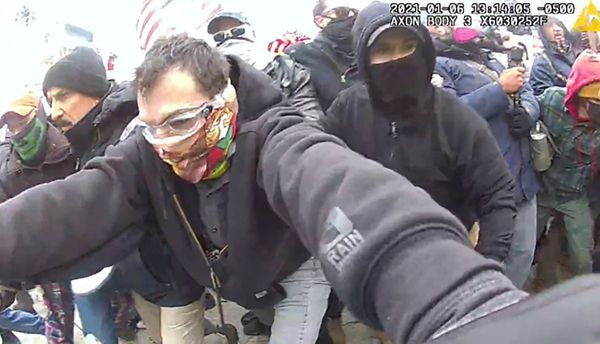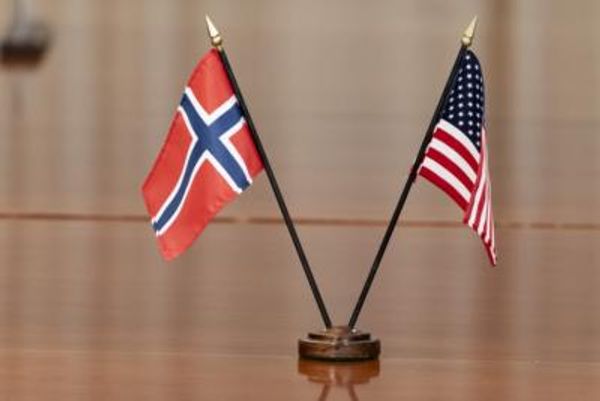
For the past few weeks, the American West has been confronting a hellish climate nightmare of scorching heat waves, a severe drought, and raging wildfires.
And it’s not just the West—or even the United States. In typically chilly Siberia, ground temperatures reached a blistering 118 degrees Fahrenheit. The Middle East has been gripped by a searing heat wave and a drought that has especially hammered Syria. In late June, a small Canadian village was almost completely consumed by wildfire. China is also bracing for another year of extreme weather, including torrential rains and flash floods, as well as heat waves.
While extreme, these current conditions aren’t entirely surprising. Scientists have long warned of the dangers of climate change, though the West’s current drought—which is more intense and expansive than in previous years—is a worrisome sign of what’s to come. Without substantial policy responses, these climate extremes could continue to plunge communities into crisis—and fundamentally change society.
“It’s really a wake-up call to us that climate change is here and it’s getting worse, and we’re not prepared,” said Peter Gleick, co-founder of the Pacific Institute.
Although high temperatures and droughts aren’t unusual in the American West, climate change—which is fueled by human activity—has made them more intense and frequent. In a recent study, a team of climate researchers found that the scale and severity of June’s record heat wave would have been “virtually impossible” without climate change.
“There is a detectable human fingerprint on essentially all unprecedented extreme heat waves,” said Daniel Swain, a climate scientist at the University of California, Los Angeles.
And its impact has been deadly. Extreme heat kills, especially among the elderly and in places ill-equipped to handle it—and with the intensity of this year’s heat wave, it already has. When record heat struck Washington and Oregon in late June, it took the lives of an estimated 90 people; in British Columbia, it claimed the lives of hundreds more.
Throughout the West, the drought has also threatened communities through more indirect channels, such as the water supply. In June, officials warned that Lake Oroville, California’s second-largest reservoir, was being depleted so quickly that it might have to close for the first time ever—a closure that could affect the electricity for 800,000 homes. Lake Mead, the country’s largest reservoir, which helps power the gigantic Hoover Dam, also reached historic lows, further stoking concerns about the supply of water and electricity for many states in the West.
On top of a stressed water supply, the heat has also strained power grids and prompted blackouts. “We’re seeing shutdowns just at the moment when people need power the most,” said Alice Hill, a senior fellow for energy and the environment at the Council on Foreign Relations. The impacts aren’t limited to energy, either. “Once the power grid goes, the health sector is affected, the transportation sector, communications, financial sector—all of them bear costs when we lose our access to power,” she said.
As the drought deepens, its environmental impact could be particularly dire. Ecosystems often can’t adapt to changing climates as rapidly as humans can, and states like California are already home to a number of endangered fish species. On the coast of Canada, an estimated 1 billion sea creatures were killed in June’s heat wave.
“During severe droughts, those ecosystems really suffer the most,” Gleick said. “We’re worried about endangered species going extinct; we’re worried about ecosystems drying up.”
When temperatures soared in late June, U.S. President Joe Biden pledged $37 million to support wildfire mitigation projects in one hard-hit California county and promised to raise the wage of federal firefighters to $15 an hour. Earlier, in May, the government also announced that the Federal Emergency Management Agency would double the funding available for states to brace for extreme weather disasters.
But in Washington, Democrats have long faced political hurdles to combating climate change, particularly from Republicans. Former U.S. President Donald Trump famously called climate change a hoax and withdrew the United States from the Paris climate accord; more recently, Republican Sen. Ron Johnson dismissed the climate crisis as “bullshit.” These divides are also reflected more broadly in each parties’ base: Almost half of Democrats say addressing climate change is a top personal concern, compared to just 10 percent of Republicans, according to the Pew Research Center.
In June, a group of Republicans formed the Conservative Climate Caucus to address climate change—but the group has refused to endorse specific policies, and its leader, Rep. John Curtis, has said that climate change should not be called a “crisis.” And while a separate bipartisan infrastructure bill for $579 billion—which activists hoped would focus on combating climate change—earmarked $47 billion for climate resilience, it excluded Biden’s key measures, including a clean electricity standard, just when the havoc currently being caused by climate change was made most clear.
“The truth is, we’re playing catch-up,” Biden said in June. “This is an area that’s been under-resourced.”
The current government response is “nowhere near the levels that are required to adequately prepare the United States for the climate risks it currently faces, much less those in the future,” said Hill, who noted that Washington has so far incorrectly focused its efforts on post-disaster recovery efforts, not preemptive risk reduction. Biden also has yet to adopt a national adaptation strategy, the Council on Foreign Relations senior fellow said, even though most developed countries have one and creating such a plan is critical to addressing key risks.
“We’ve built our entire civilization on the assumption that climate is relatively stable,” said Katharine Hayhoe, a climate scientist at Texas Tech University. “So it’s as if we’ve been driving into the future looking in the rearview mirror.”
Others reach for similar metaphors to describe the shrinking window of opportunity to enact policies to reduce the emission of greenhouse gases that cause climate change. Even as the once-future impacts of climate change hit home, Republicans in several states are redoubling efforts to force the use of fossil fuels and further jack up harmful emissions. And in China, government warnings of extreme weather still don’t even mention the role of climate change.
“Climate change is not self-perpetuating; we’re perpetuating it through the choices that we continue to make,” said Swain, the climate scientist, who compared the current climate crisis to a runaway truck. It’s not that the truck’s brakes are bad—the world just isn’t using them, he said.
“We still are in control,” said Swain. “We’re just making some pretty bad decisions about what we do with that control that we have over the climate system.”
But unless policymakers at all levels start pumping the brakes, the extreme climate conditions that the world is enduring now will only intensify, as will its consequences. Critical infrastructure will likely continue to buckle under the scalding heat. Ecosystems will suffer, and some species may go extinct. Many more people will likely die.
What we’re seeing now is “a harbinger of what’s coming,” Gleick said. “We need to wake up. We need to realize that the consequences of a warming planet are going to be bad for everyone—and they’re going to get worse.”







